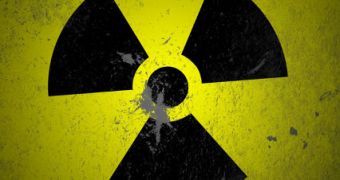It's autumn cleaning time for Tokyo Electric Co., i.e. Tepco, the company that owns and used to operate the Fukushima nuclear plant in Japan. It looks like, in just a few days, company workers will start removing spent fuel rods presently tucked away inside the facility's Reactor No. 4.
According to Reuters, removing the rods inside said reactor is expected to take about 12 months. Once the operation is complete, the nuclear plant will be free of about 400 tonnes of highly irradiated material.
The same source tells us that, according to information released by Tepco, high levels of radiation and significant structural damage have also been documented in the case of Reactors No. 1 and No. 3. In fact, it appears that these reactors are in far worse shape than No. 4.
However, Tepco has decided that it would be best to begin decommissioning the plant by clearing the latter of the spent fuel rods inside it due to the fact that this reactor sits some 18 meters above ground level and the building that houses it is now slightly tilted, “courtesy” of the devastating earthquake that hit the facility in March 2011.
Removing the rods from Reactor No. 4 will by no means be as easy as picking apples. Apparently, each of the rods weighs about 300 kilograms (660 pounds) and measures roughly 4.5 meters (15 feet) in length.
Should they come into contact with air or accidentally break, they are bond to release loads of harmful radioactive gases into the atmosphere. The good news is that Tepco maintains that its workers are well equipped and trained to handle them properly and make sure nothing goes wrong.
According to a press release issued by Tepco earlier today, specialist Lake H. Barrett, who used to work with the US Department of Energy, has visited the plant and has given the green light to the planned clean-up activities.
“While removal of the fuel is usually a routine procedure in operating a power plant, the damage to the reactor building has made the job more complex,” Lake H. Barrett reportedly said.
“TEPCO and its partners have made extensive preparations and are employing specialized technology designed to meet the particular needs of extracting the fuel from the damaged building and safely moving it to more secure storage. I am genuinely impressed by the thoroughness of the effort and TEPCO's contingency planning,” he added.
Check out the video below to get a better idea of how clean-up operations at Reactor No. 4 are expected to take place.

 14 DAY TRIAL //
14 DAY TRIAL // 